Hidden in the mountains of Imari is Okawachiyama Village, where the Nabeshima clan kilns produced high-end porcelain during the Edo period. Stroll through the cobblestone streets, enjoy the beautiful mountain scenery, and browse the quaint porcelain and ceramic shops.
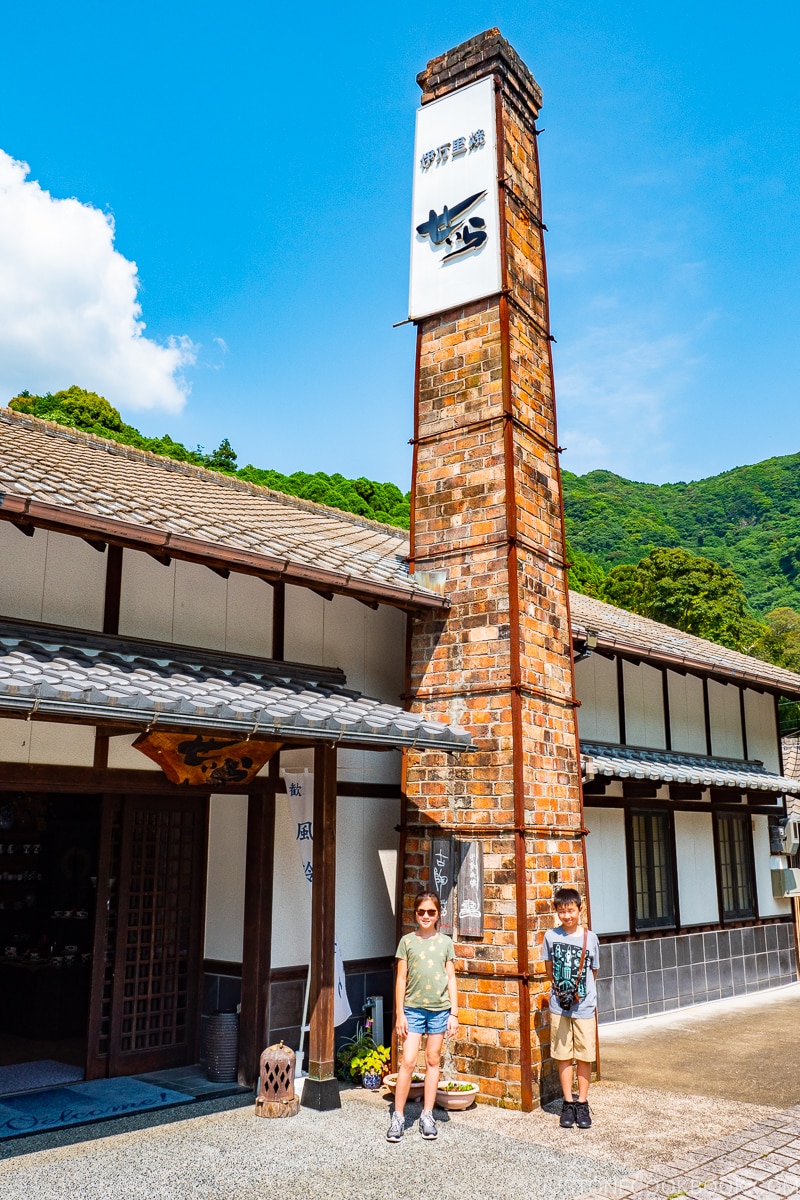
During the Edo period (1603-1868), the Nabeshima clan ruled the Saga Domain (current day Saga Prefecture) and produced premium porcelains for the Japanese nobility and the ruling class as gifts. These porcelains were produced at the remote Nabeshima kilns in Okawachiyama Village. It was referred to as the “Village of the Secret Kilns” due to its isolation and how closely the production secrets were guarded.
Where is Okawachiyama Village
Okawachiyama Village is located in northwest Kyushu (Saga Prefecture). If you are taking public transportation, the easiest way to get there is to arrive at Imari Station and then a 10-min taxi ride to the village.
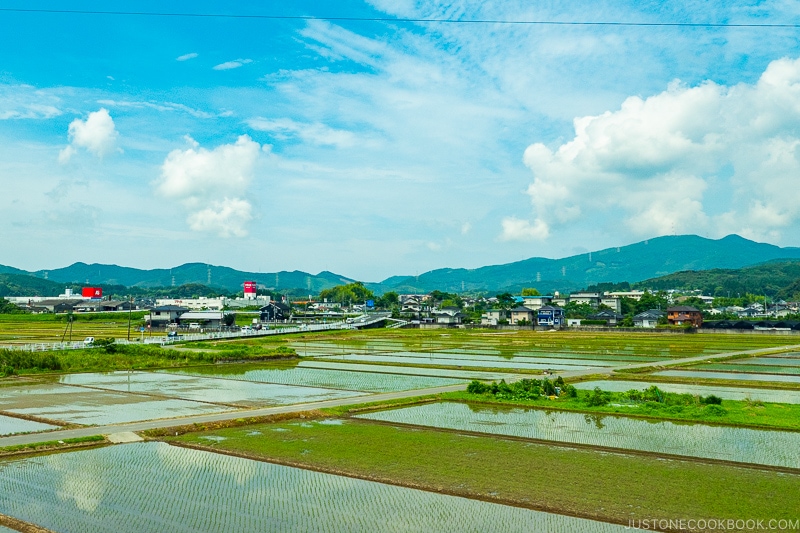
We left Kagoshima by taking the Shinkansen north to Shin-Tosu Station and transferred there to Midori-Huis Ten Bosch train to Takeo Onsen. From Takeo Onsen, we rented a car to explore the Arita and Imari area.
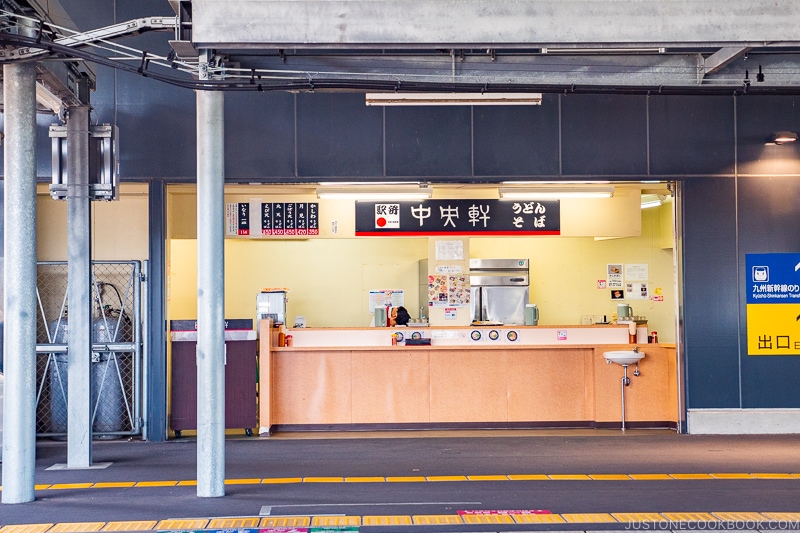
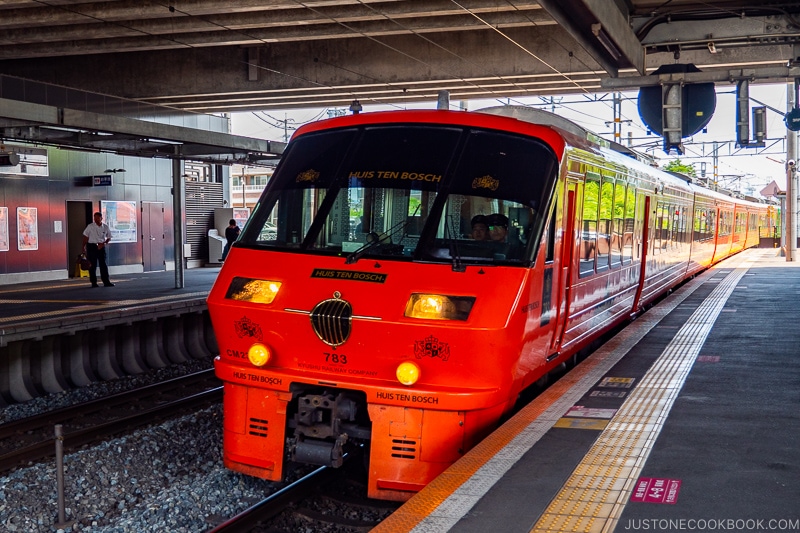
Why Visit Okawachiyama Village
As much as we love big cities in Japan, we treasure the unique and serene experiences in smaller towns and less touristy areas just as much. Okawachiyama Village offers countryside charm and relaxing landscapes for visitors to enjoy without the crowds (at least not when we were there). If you are interested in other less-traveled places in Japan, check out our off the beaten path guides.
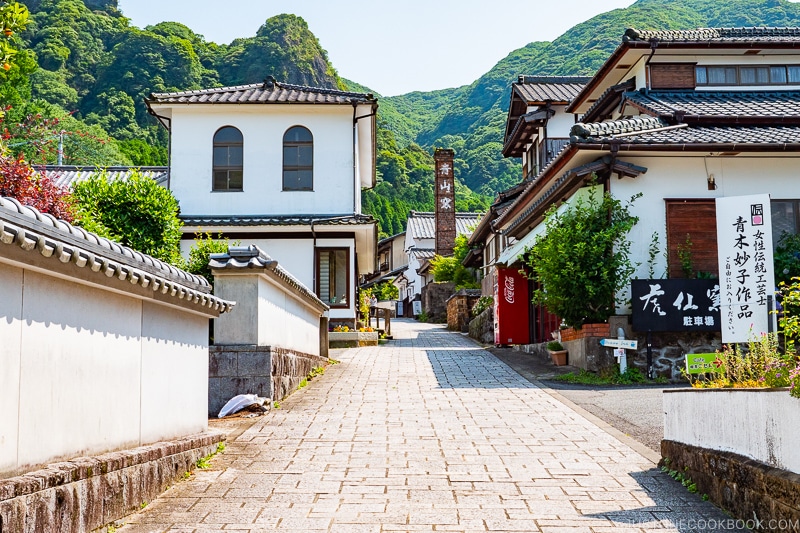
Nabeshima Ware
Saga Domain is the birthplace of Japanese porcelain with 400 years of history. The most well known are Arita ware (有田焼) and Imari ware (伊万里焼), which are widely collected throughout the world.
Okawachiyama Village is small but played an important role in the recognition of high-quality Nabeshima Ware from Saga. Nabeshima Ware, named after the Nabeshima ruling family of Saga Domain produced in the Edo period were all made in secrecy at Okawachiyama Village.
To maintain Nabeshima Ware’s status as an elite gift, the techniques used by the potters to produce the porcelain was a highly guarded secret. The surrounding mountain landscape allowed the Nabeshima clan to guard the kilns and keep the potters from escaping so the production methods weren’t leaked.
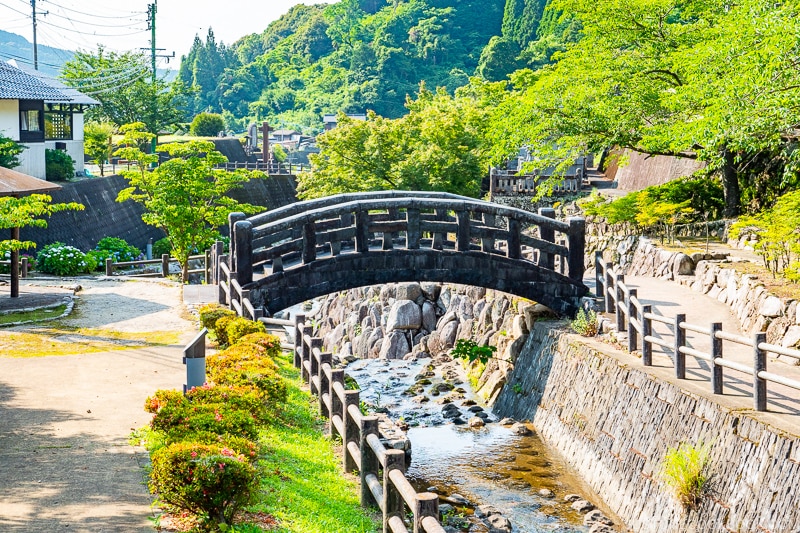
The primary reason for our visit is to see the beautiful ceramics (Nami loves her kitchenware and dinnerware). Secondly, we wanted to add interesting pieces to our food prop collection for the photos.
It’s still worth visiting Okawachiyama Village even if you are not planning to purchase any porcelain. The cobblestone street and the traditional buildings will transport you to a different time.
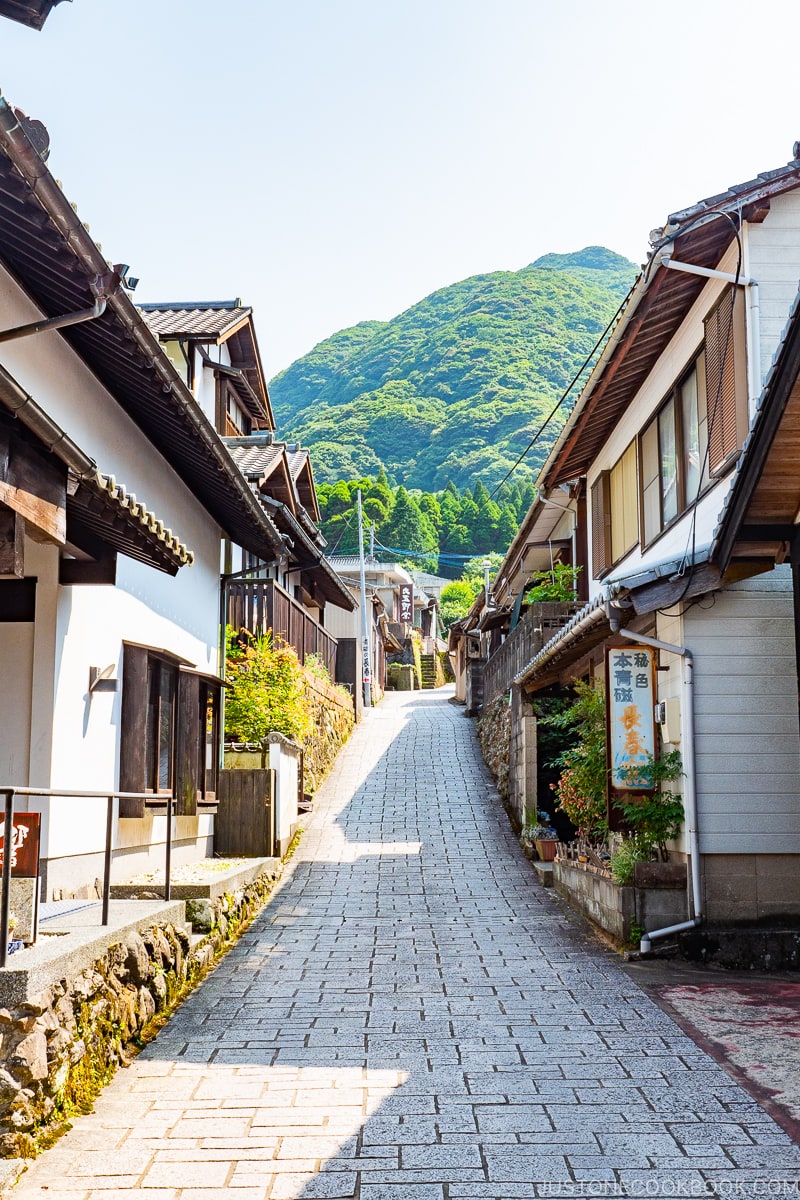
Imari and Arita Ware Traditional Craft Hall 伊万里・有田焼伝統産業会館
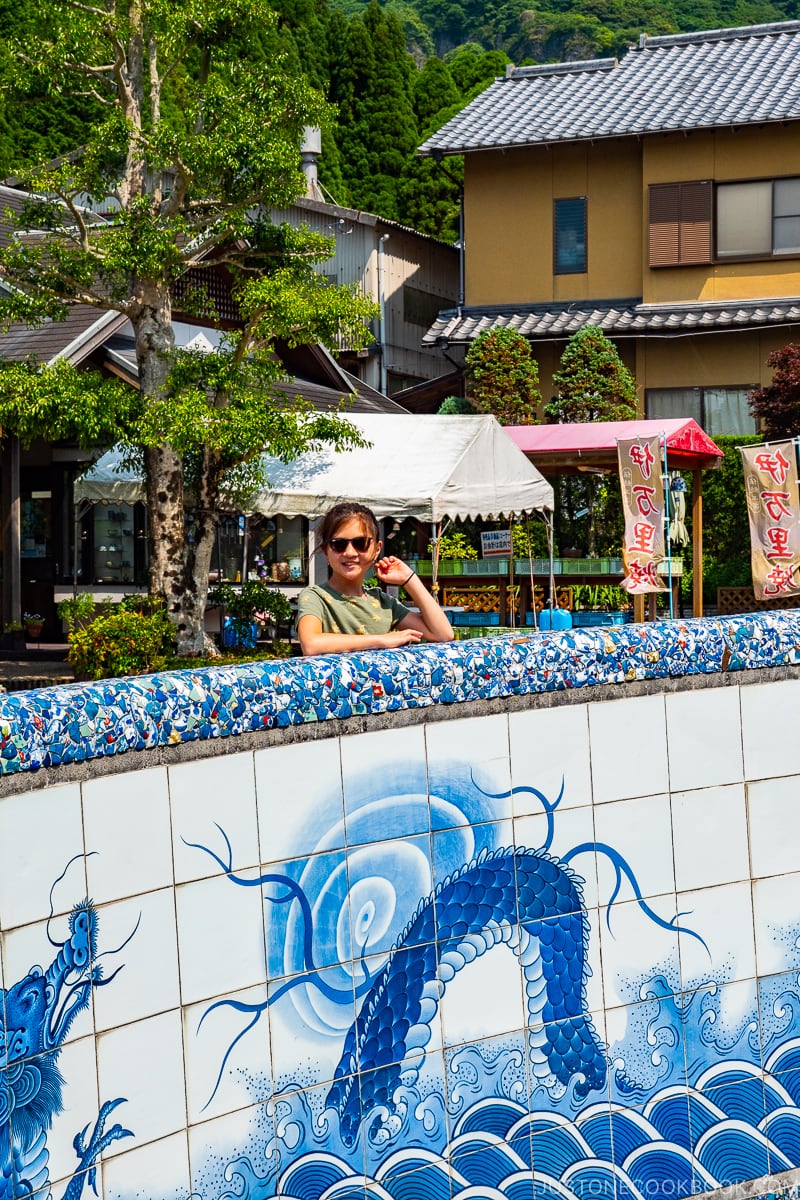
No cars are allowed on the streets in Okawachiyama Village so all visitors are required to park near the village entrance.
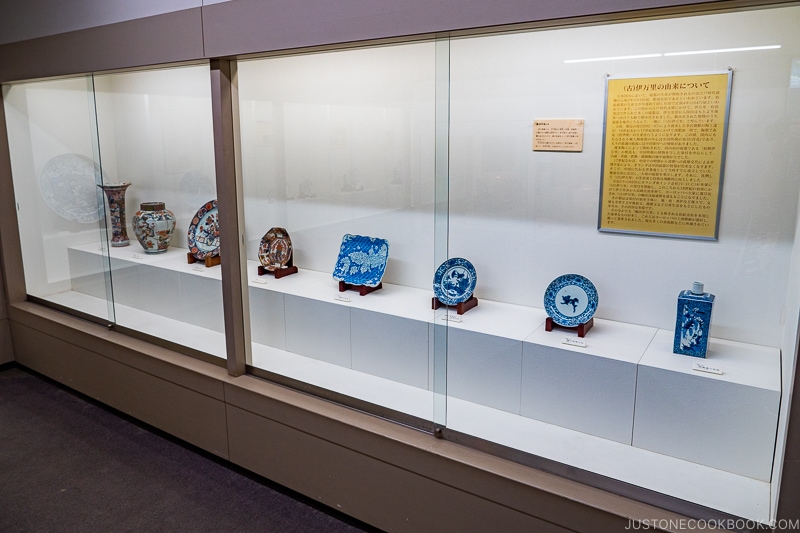
There are two buildings near the village entrance and one of them is a small museum. Inside the museum are various exhibits, which include the history of porcelain in the area, types of clay, the story of Nabeshima Ware, and porcelains with significant cultural importance.
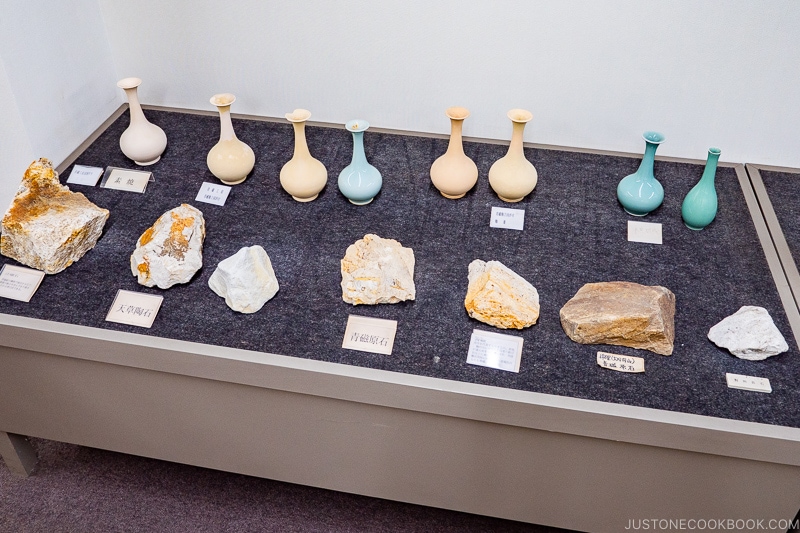
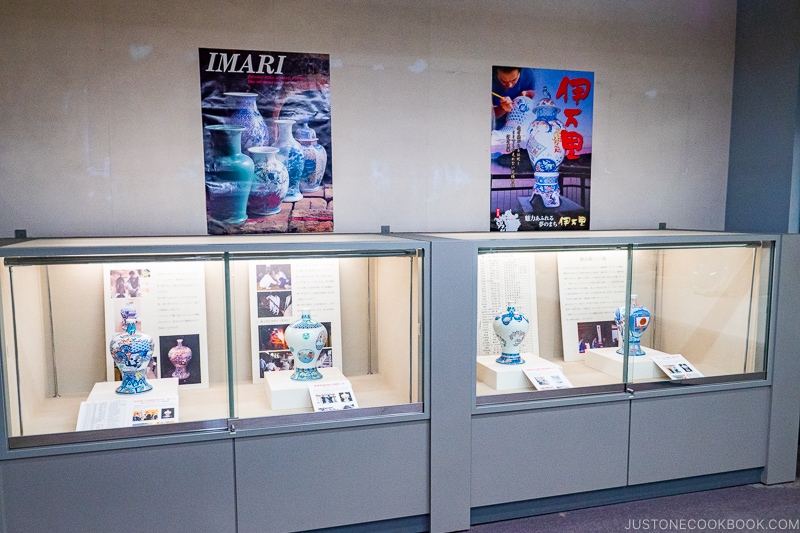
The other building near the entrance is a cafe and gift shop. The gift shop carries a sample of work from all 30 kilns in the village. If you are not sure which shop you want to visit, this is a good place to start. You’d get an overall view of the patterns and porcelain designs on display and decide the ones that suit your taste.
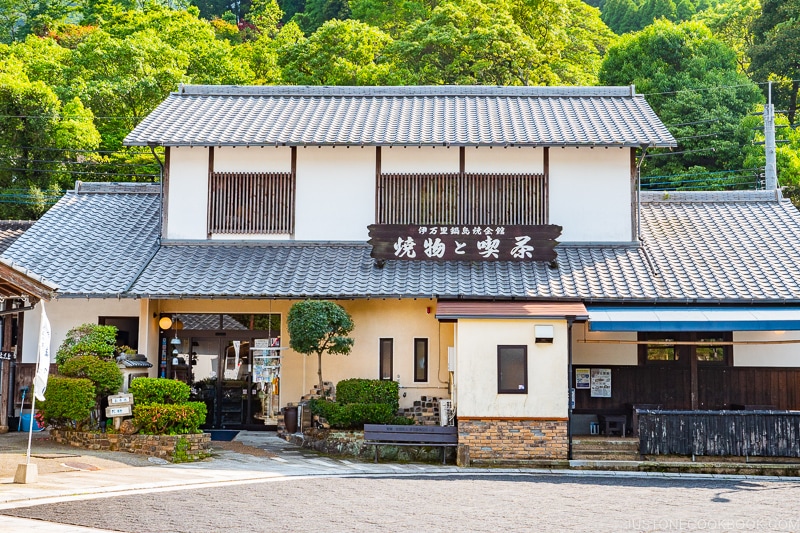
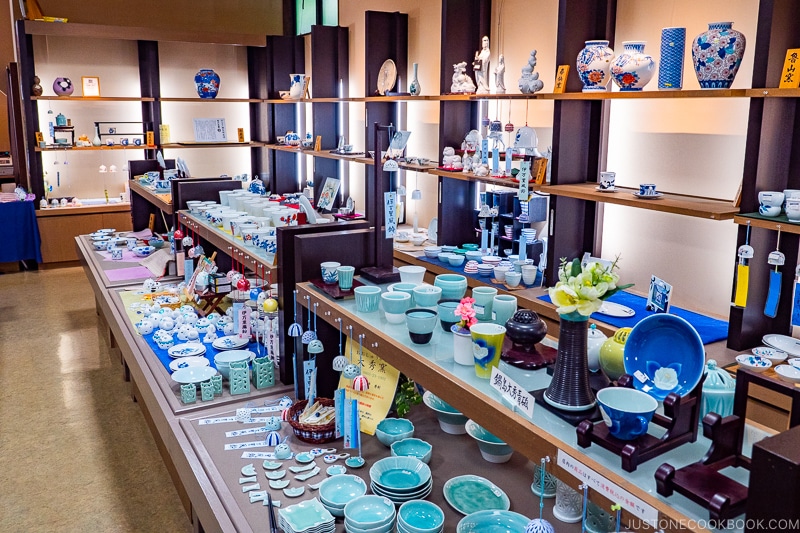
Okawachiyama Village
There are about 30 shops at Okawachiyama Village selling porcelains and various ceramics. In case you are wondering about the difference between ceramics and porcelains, here’s a quick explanation. Ceramics is a general term describing clay that has been heated and hardened.
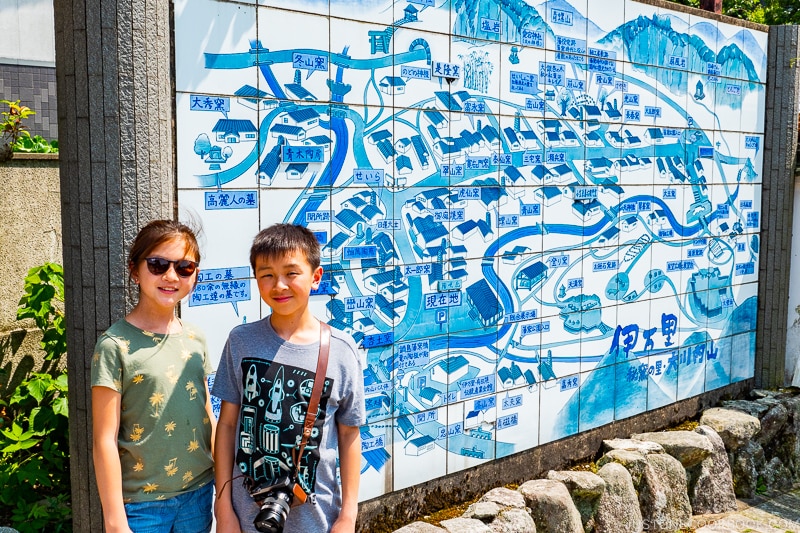
Types of ceramics include pottery, earthenware, stoneware, and porcelain. What makes porcelain unique is it’s made from a white clay called kaolin and heated at a much high temperature than other types of ceramics. Porcelain is thinner and stronger than other types of ceramic and it’s a lot more waterproof.
History of Okawachiyama Village
Porcelain started in Japan in the early 1600s with techniques brought over by Korean potters. When one of Lord Nabeshima’s potters, Risanpei discovered high-quality porcelain clay (Izumiyama Quarry) in Arita, the first kiln dedicated to porcelain started.
The Nabeshima clan kiln moved to Okawachiyama Village around 1675 and produced what is considered the best Japanese porcelain for over 200 years during the Edo period. The kilns were shut down in 1871. The current village re-opened in 1984 and is designated as a national historic site.
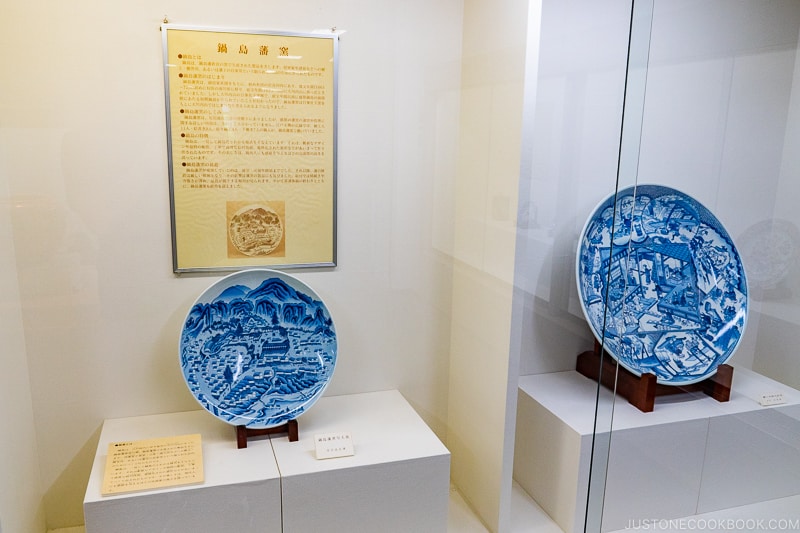
The Shops at Okawachiyama Village
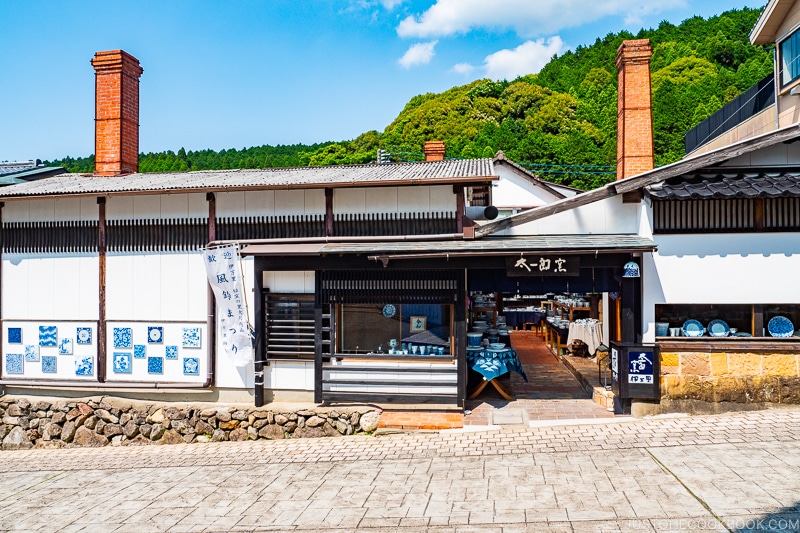
The 30 shops range in different sizes and types of porcelain and ceramics they sell. Compared to the ceramic shops in nearby Arita, the ceramics collections at Okawachiyama Village are more unique and less mass-produced.

The porcelain pieces are rather expensive, ranging from US$50 to $1,000+. Why so pricey? Many of the porcelains here are for displaying in homes as art pieces or to give as gifts.
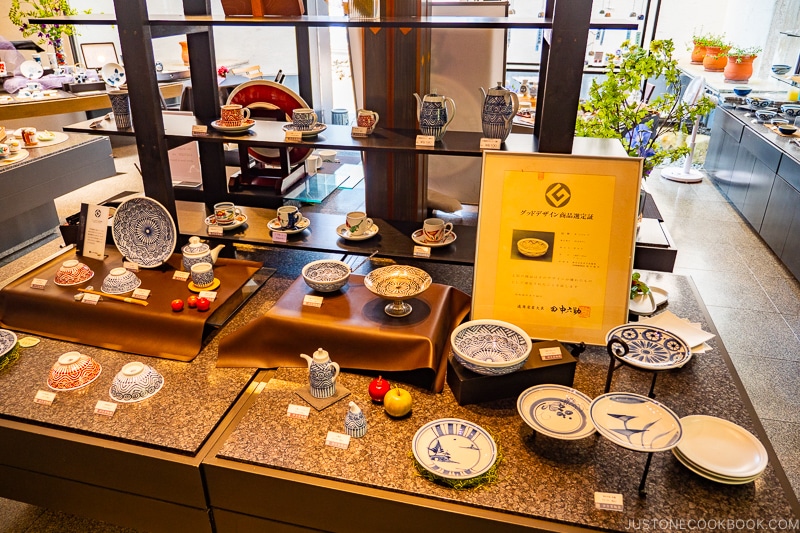
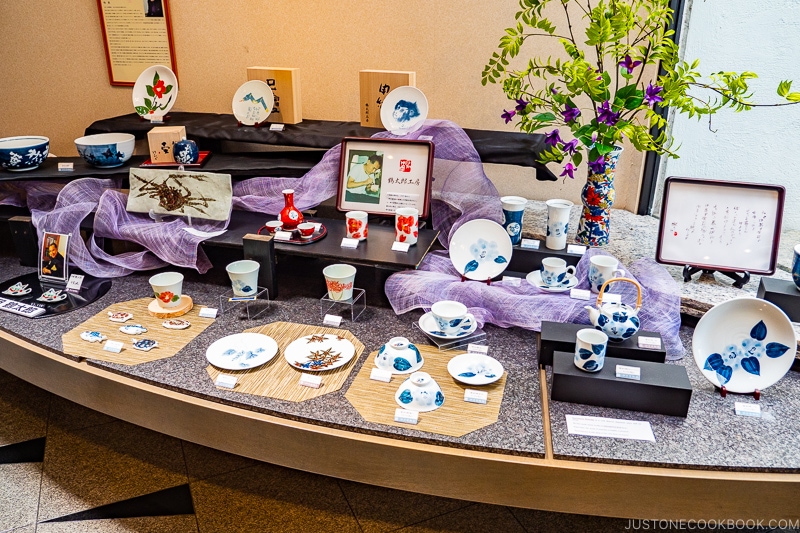
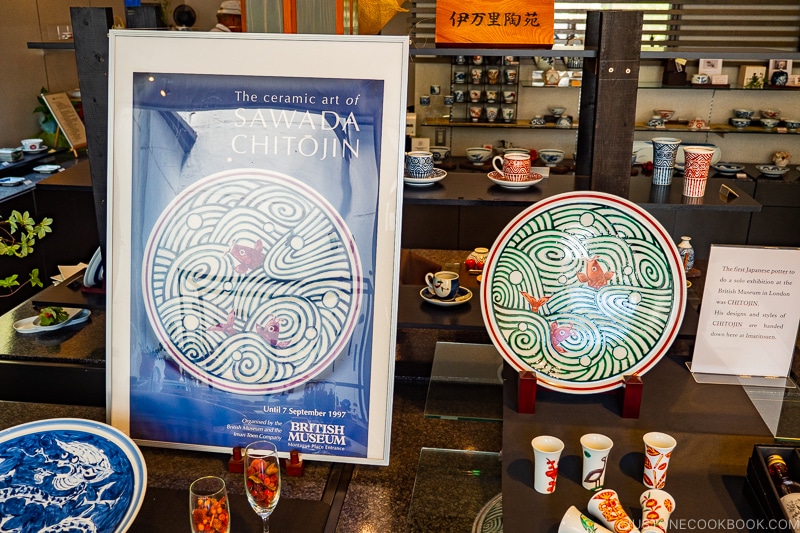
Some of the stores are very modern inside with slicks displays cases while others are more traditional.
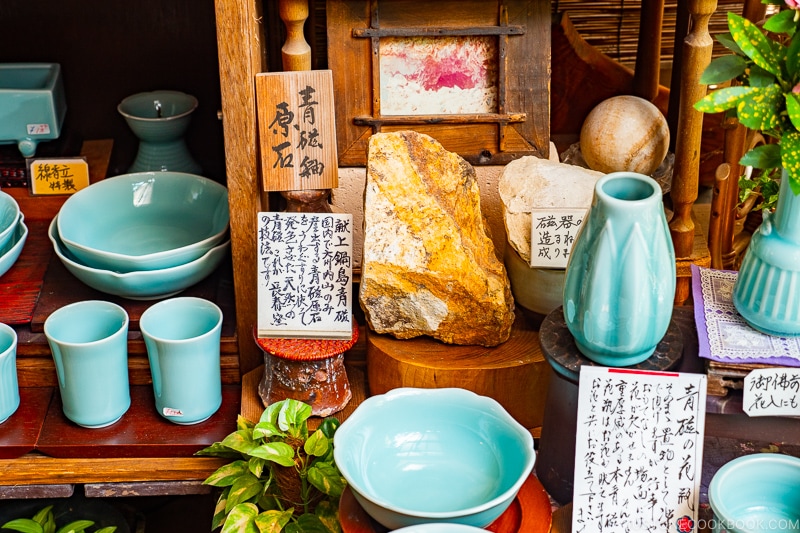
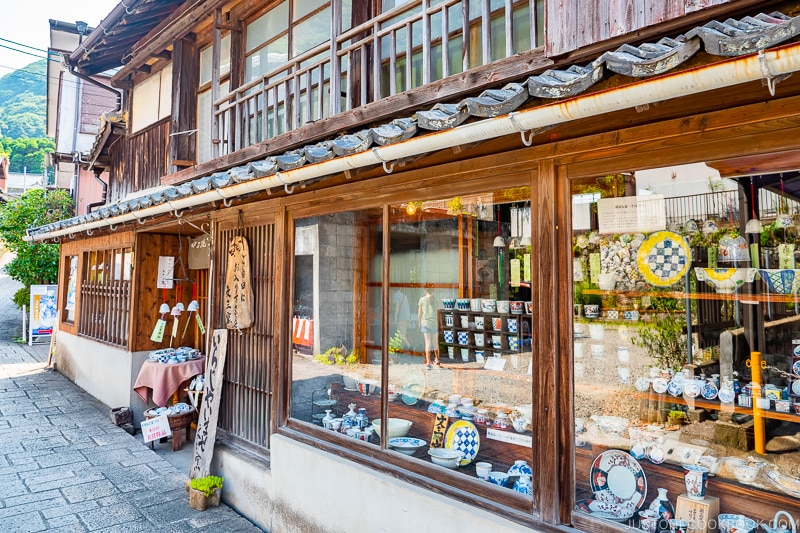
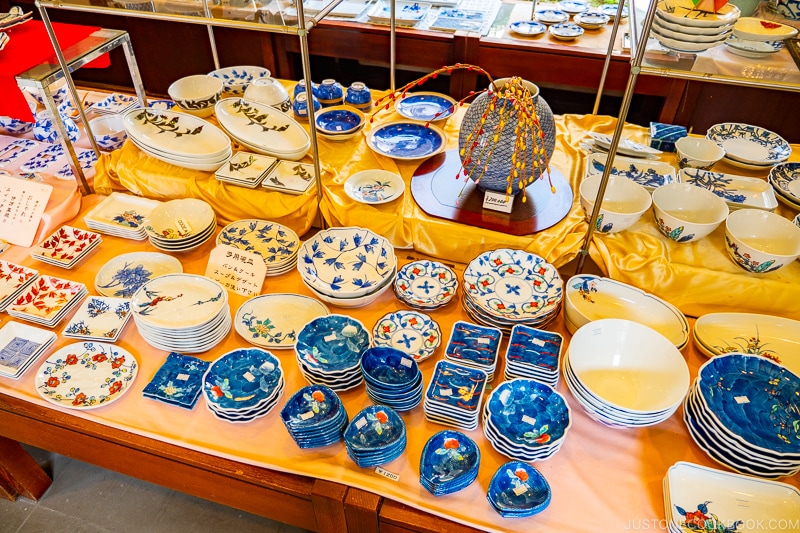
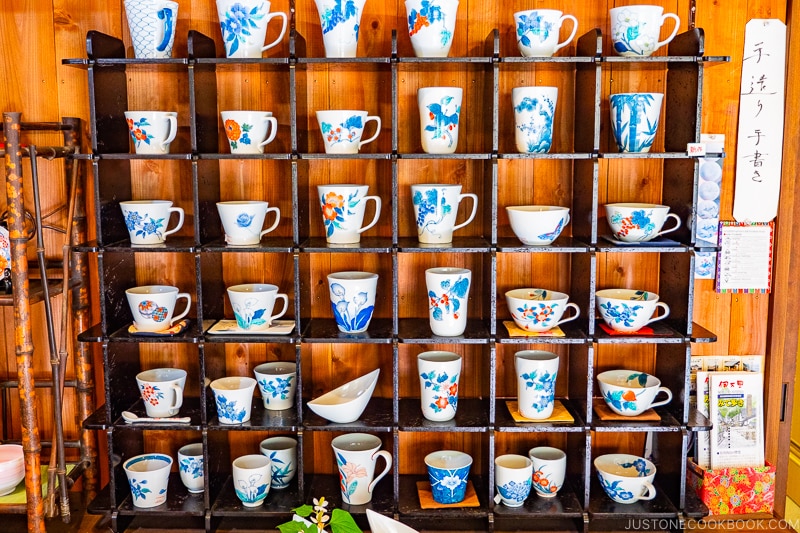
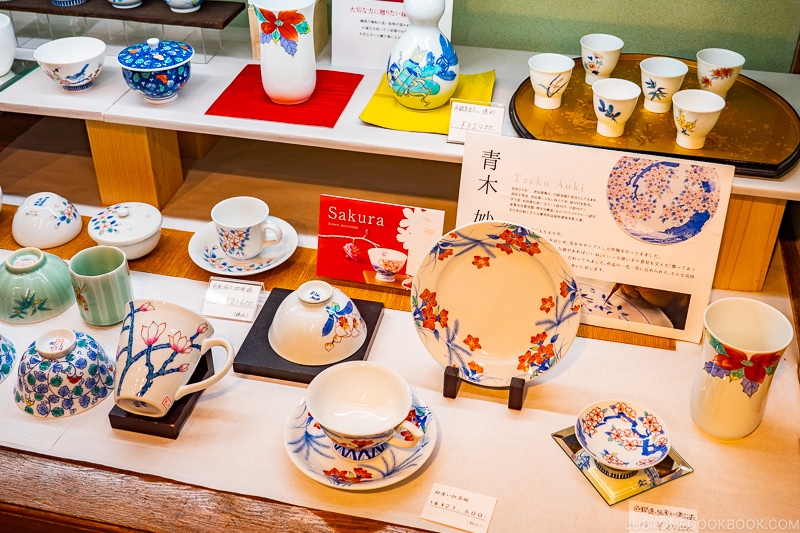
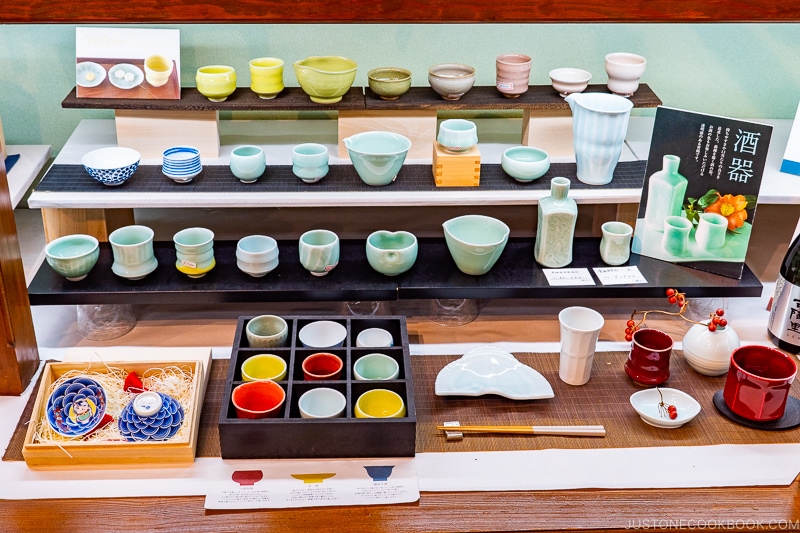
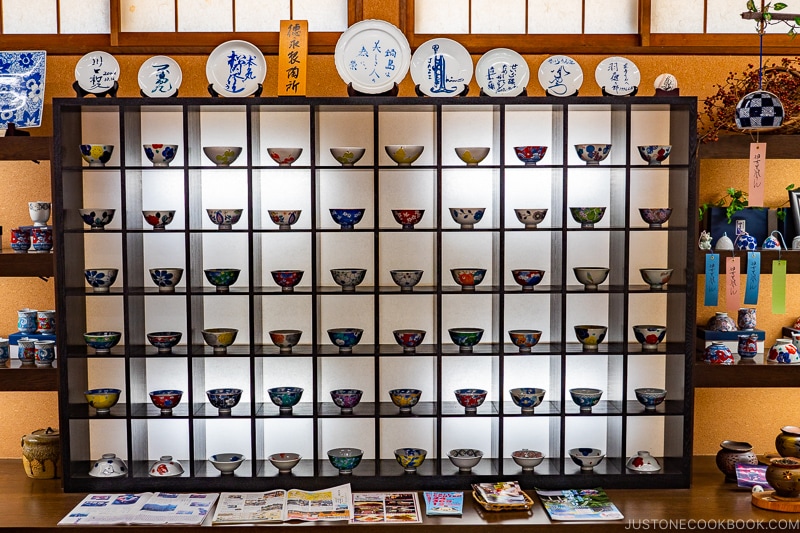
Our Favorite Shop at Okawachiyama Village
Among the 30 shops, one of our favorites was Seizan. Seizan has two showrooms, one features high-end art pieces and tableware and the second one is the more economical Seizan +. The collections are meant for daily home use and the prices are more reasonable.
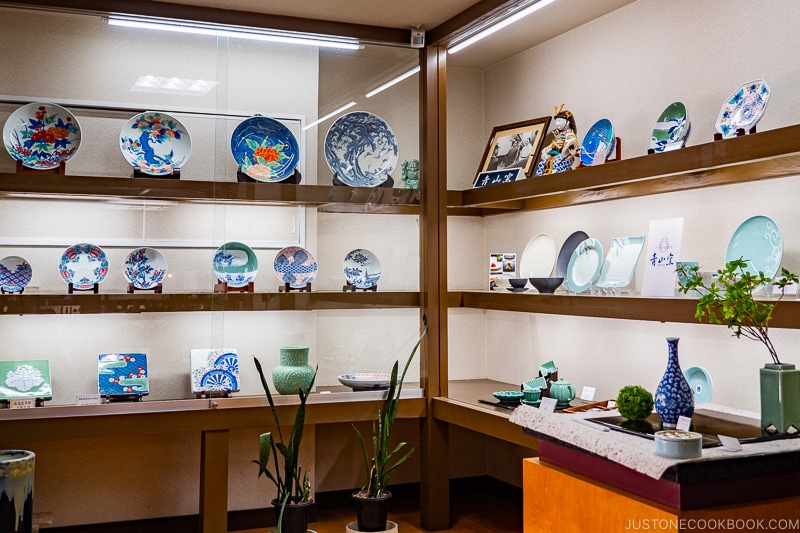
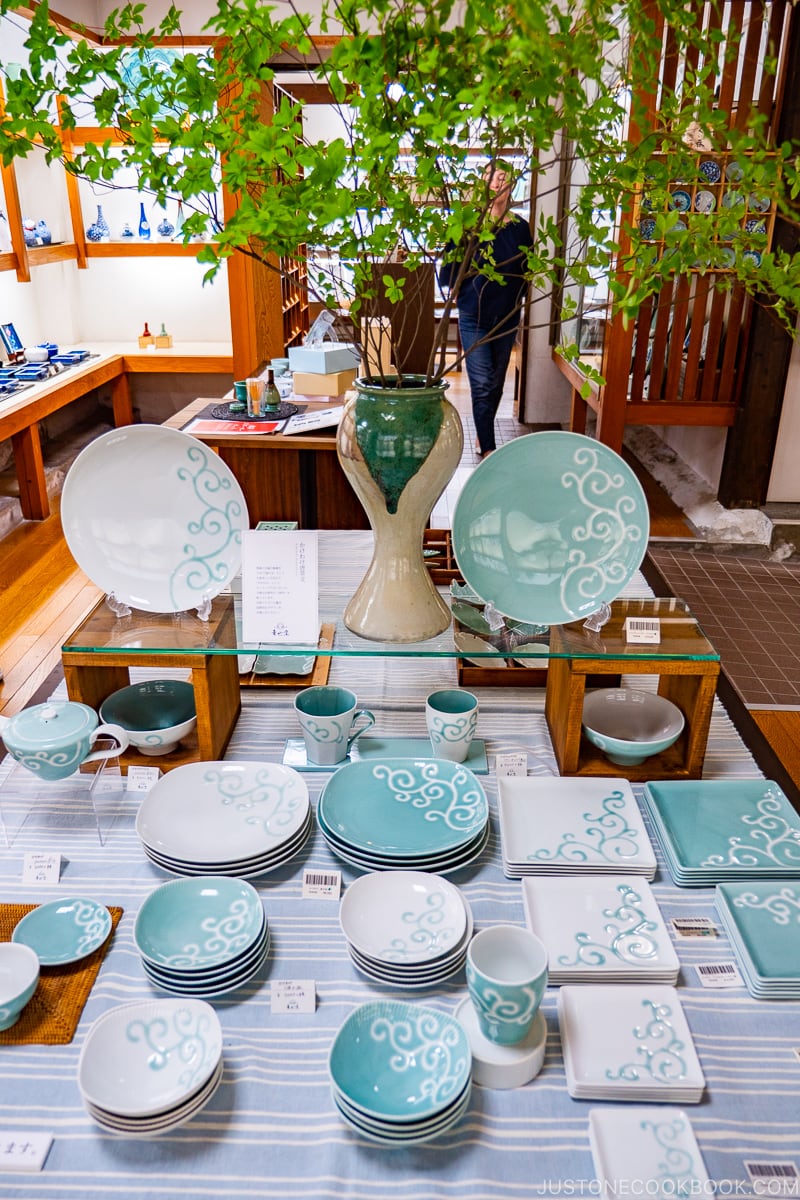
You might recognize some of the porcelains below in our food photos.
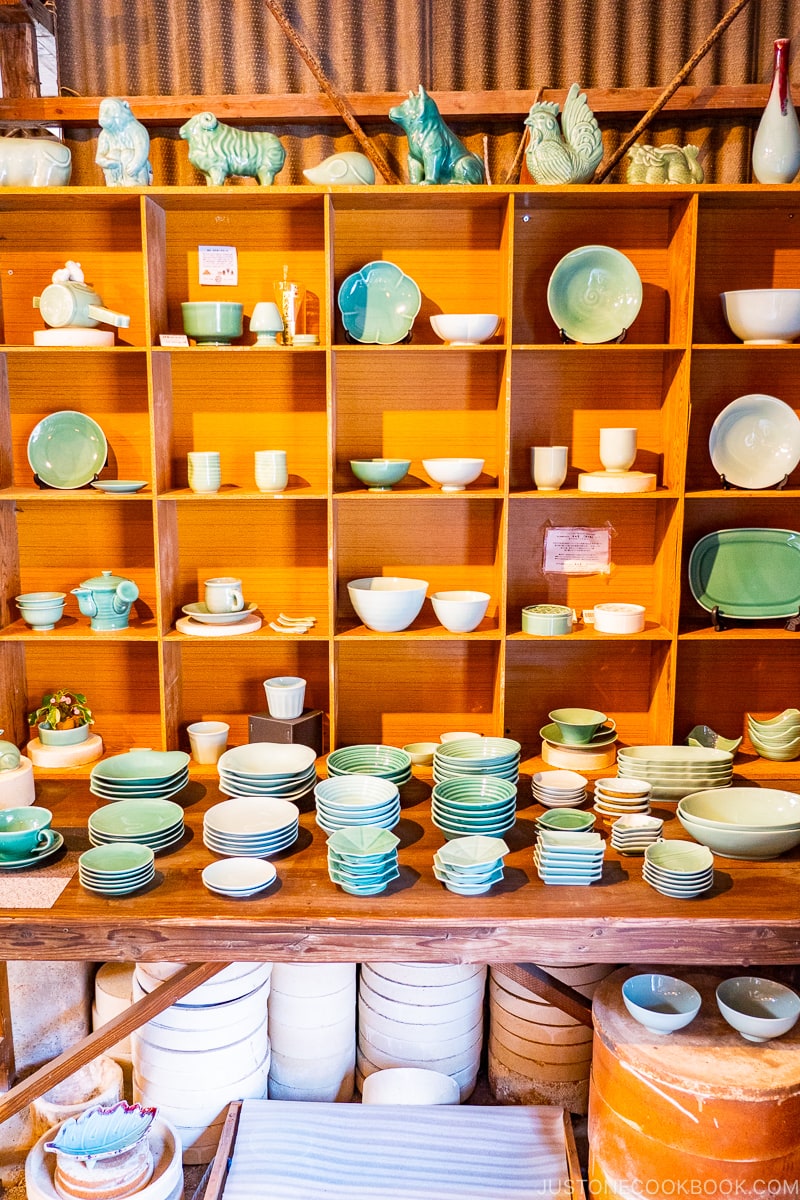
We hope you enjoy the tour of Okawachiyama Village with us. If you love Japanese porcelains and plan to visit the northern Kyushu area, make sure you plan a stop for half a day there. The charming shops, green landscape, and the beautiful porcelains pieces are well worth the time.
But if you can’t make it to Kyushu and want to see a good collection of Japanese porcelain, stop by Tokyo’s Kappabashi Kitchenware Town. It’s the street dedicated to everything you’ll need for the kitchen!
For the next stop, we’ll go to Arita and explore more historical sites for Japanese porcelains.

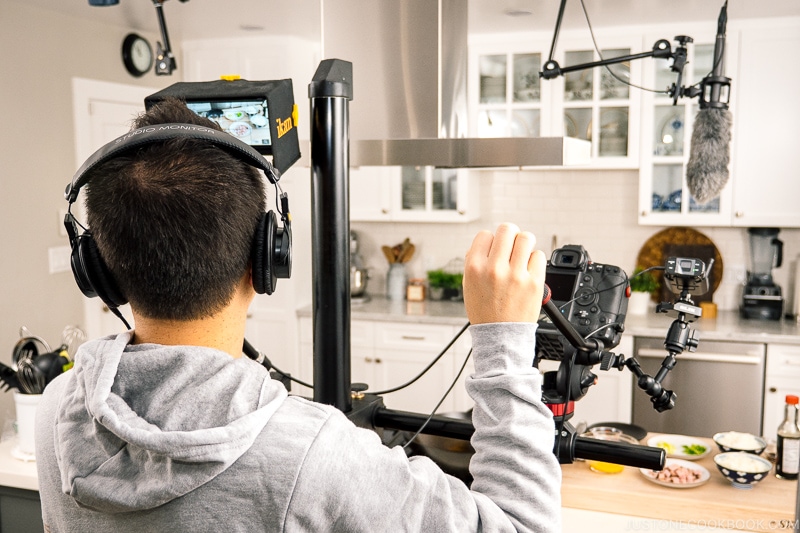









Natsukashi! I took my engagement photos here! My mother is from hasami and I grew up near huis ten Bosch 😅 been overseas for six years now and I can’t wait to go home. Thank you for sharing!
Hi Shawna,
Thank you for stopping by! We love Kyushu and enjoyed our visit to Arita and Imari area.
Iti multumesc pentru aceasta superba excursie , am vazut aceste portelanuri si peisajurile care sunt o incantare. Cu ajutorul tau am cunoscut si o alta parte a Japoniei, muzee, filme, parcuri iti multumesc pentru munca depusa.
Vă mulțumim că ne-ați oprit să citiți postarea noastră de călătorie din Japonia despre porțelan. Spune-ne dacă putem îmbunătăți conținutul.
I love Japan 😍🥰❤️
Hi Edward, thank you for stopping by to read our Japan travel adventures!
Dear Nami,
Thank you for sharing your wonderful recipes!!
I also love your “tour guides” and will include Okawachiyama Village to my next holiday to Japan (heaven knows when!)
In your story about Okawachiyama you wrote “Midori-Huis ten Bosch” train.
Being Dutch it would be nice to know why “Huis ten Bosch” since this name is completely Dutch??
Kind regards,
Kees
Hi Kees,
Great question! Huis ten Bosch is a Dutch theme amusement park near Nagasaki. We visited there after Imari/Arita and the train is named after the park. We’ll have a post on Huis ten Bosch.
I visited Kyushu in 2013 during autumn; I recognise the shop with th smoke stack in Imari (the first picture)! Now that I have my own home, I regret not getting anything from Imari but nice memories and pictures. I have visited Japan 3x, not planning to stop visiting since I love it so much.
Hi SC, it’s so cool you got to visit Okawachiyama Village as it’s not a typical tourist destination. We hope you’ll get to go back one day and pick some special pieces for your home.
Love love love porcelains / ceramics this was delightful to look at!
Hi Candy, thank you for stopping by to read about the ceramic in Okawachiyama Village!
Thank you so much for sharing this post! I’m a potter and mostly works with porcelain therefore I am so very happy to see that you are making the connection for the readers on pottery and food. Every meal we feast with our eyes before our taste buds. Therefore, beautiful presentation is essential and the bowls and plates play a major role in food presentation. Thank you!
Hi Lily, it’s so cool you’re a potter! Do you have a link to share for your work? We agree with you presentation is important and the correct tableware makes food look even tastier.
Hi Mr. JOC, thanks for reaching out! I’ll definitely share my link when I have it going again. The pottery studios are all shut down and nothing is getting fired due to COVID19. I know you are from Taiwan like me, next time when you guys go back to Taiwan, be sure to visit 鶯歌陶瓷博物館 (https://www.ceramics.ntpc.gov.tw/) and visit the streets and shops of Taiwanese pottery town if you haven’t already.
We didn’t know about it! Thank you and we’ll try to make it on our visit to Taiwan.
Thank you for sharing they’re so beautiful! After seeing Nami’s ig story on her ceramics/porcelain when you guys last went to Japan, I told myself I’d buy some too. Sadly that didn’t happen as I had absolutely no more room in my luggages 😩. I think the next time I go I won’t pack anything 😆 I can’t wait. Also enjoying the Miso 🐕 stories! Stay safe!
Hi Mariko,
We had no room in our luggage as well! We only allow 1 carry-on suitcase worth of clothing per person in the family. The rest of the luggage are for kitchenware and dinnerware. We buy cardboard boxes and wrapping bubbles in Japan to ship all the ceramics back along with us on the flight.
The shops will package your purchases very well if you request them to.
Cool! Thanks so much for sharing, I will add to my bucket list, we go to japan ea yr
Hi Katherine,
Thank you for stopping by. If you haven’t had the chance, spend a bit of time in Kyushu. We absolutely love the food, culture, and the slower pace compared to Tokyo.
Oh I have, our sister city is Amakusa and I love Fukuoka, thanks! Can’t wait to go back
Thanks for the wonderful tour on ceramics. I’m a nut on that. Years ago I took a side trip aiming for Imari, but got off at Arita. We were blown off by the town’s “ceramic palace” and spent the day visiting a local ceramic house. Never made it to Imari! Next time?
Yes, please make a book on your travels. Love the local details. Want a paper copy to cherish the moment. Thanks for sharing.
P.s. love seeing your kids growing up before our eyes!
Hi Mayi,
It’s so great you got to visit Arita. Imari is quite similar but does not feel as touristy. We highly recommend going to Okawachiyama Village on your next visit if you love Japanese ceramics and porcelain.
Nami –
Have you ever thought about publishing your trip guides for sale? I would buy them.
Hi Regina,
We finished a Tokyo guidebook but because of the current situation we’ve held off on publishing it. Will release it once international travel is back to normal.
Wonderful!! Have been to Japan many times with the Hood River,Oregon -Tsuruta, Japan Sister City program. Enjoying your travel and recipes!
It’s always a joy to see you in my inbox.
Domo arigato
P.S. my grandchildren have a puppy coming in two weeks. Any hints?
Hope you are nearly recovered.
Stay well
Thanks for sharing such a beautiful places, especially the porcelain dishes. I love it, everytime when I went in the Japanese kitchen stores in Toronto, I go crazy. I think that will be nice to follow you to tour in Japan as you know where is the best places to eat n best places to see. That’s my dream. Thanks again to introduce new places. Keep safe and keep healthy!
Hi Cecilia,
Thank you for your kind comments. There are so much to do and see in Japan it’s easy to have a wonderful time. When you do plan to go just let us know and we’ll help you suggest an intiniary!
Hi Margo,
Congratz on the puppy! We’ll contact you directly for tips.
Thanks so much for posting this incredible place. Where town/hotel did u stay?
Hi Sandy, Surprisingly, there aren’t many hotel selections in Imari and Arita. We stayed at Hotel Shunkeiya
in Takeo City. It’s about 20 min away by car.
Thanks, we are planning to go next summer if things are better…. I have girls ages 20 and 15….do you think the park, Huis Ten Bosch, is a must stop? I know that they like cute places like Europa Park, Disneyland, Yufuin village, etc.
Hi Sandy, you can skip Huis Ten Bosch. It was fun for our family since our children were a bit younger. It could be a bit tame and boring for your girls.